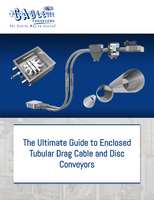ASHRAE announces call for papers for IAQ 2010 conference.
Press Release Summary:
Coorganized by CIBSE and ISIAQ, IAQ 2010: Airborne Infection Control - Ventilation, IAQ, & Energy, will take place on November 10-12, 2010, in Malaysia. It will cover role of HVA&R in airborne infectious disease transmission, design and control strategies and technology, pandemic preparedness, and airborne infection control. Peer-reviewed technical papers, workshops, and tutorials will also be featured. Deadline for abstracts is January 15, 2010.
Original Press Release:
IAQ 2010 Examines Impact of HVAC on Airborne Infectious Disease
ATLANTA -The role of HVA&R in airborne infectious disease transmission, design and control strategies and technology, pandemic preparedness and airborne infection control will be examined at the IAQ 2010 conference sponsored by ASHRAE.
Co-organized by CIBSE and ISIAQ, IAQ 2010: Airborne Infection Control - Ventilation, IAQ & Energy, takes place Nov. 10-12, 2010, in Kuala Lumpur, Malaysia. This is the first time the conference is being held outside of the United States.
"The building industry is increasingly faced with the challenge of providing a healthy indoor environment," Dr. Chandra Sekhar, conference chair, said. "The SARS episode, the current H1N1 pandemic and fears of avian flu have transformed the built environment landscape, raising not only significant public health concerns but also economic implications on a global scale. Airborne infection and its control in the built environment have tremendous impact in the design, operation and maintenance of buildings and other enclosed environments. IAQ 2010 will review the state of knowledge about airborne infection and help define future directions."
The conference will feature peer-reviewed technical papers, workshops and tutorials. Abstracts are invited in the following subject areas:
o Is airborne infection in enclosed environments emerging as a primary IAQ and health concern?
o What is our current understanding of the airborne infection route in enclosed environments, including buildings and transportation conveyances?
o What is the status of airborne infection control techniques adopted in different types of enclosed environments and our knowledge about their effectiveness?
o How do mechanical systems and other building and enclosure characteristics contribute to healthy environments in an energy-efficient manner?
o How can we create and sustain healthy enclosed environments through design, construction, commissioning, operation and maintenance?
o What metrics and tools can be used to quantify the degree to which an enclosed environment is healthy and energy-efficient?
o What are the costs and quantifiable benefits of airborne infection control strategies?
o What government and private sector programs exist or are proposed, including standards and guidelines for infection control and pandemic-preparedness in enclosed environments?
o How well are the existing programs working and what roles can ASHRAE and other organizations in the field of building science and conveyance design play?
The deadline for abstracts is Jan. 15, 2010. Abstracts, containing titles and maximum 400-word summaries, should be submitted at ASHRAE.org/IAQ2010. For more information, email IAQ2010@ashrae.org or visit ASHRAE.org/IAQ2010.
ASHRAE, founded in 1894, is an international organization of some 50,000 persons. ASHRAE fulfills its mission of advancing heating, ventilation, air conditioning and refrigeration to serve humanity and promote a sustainable world through research, standards writing, publishing and continuing education.




